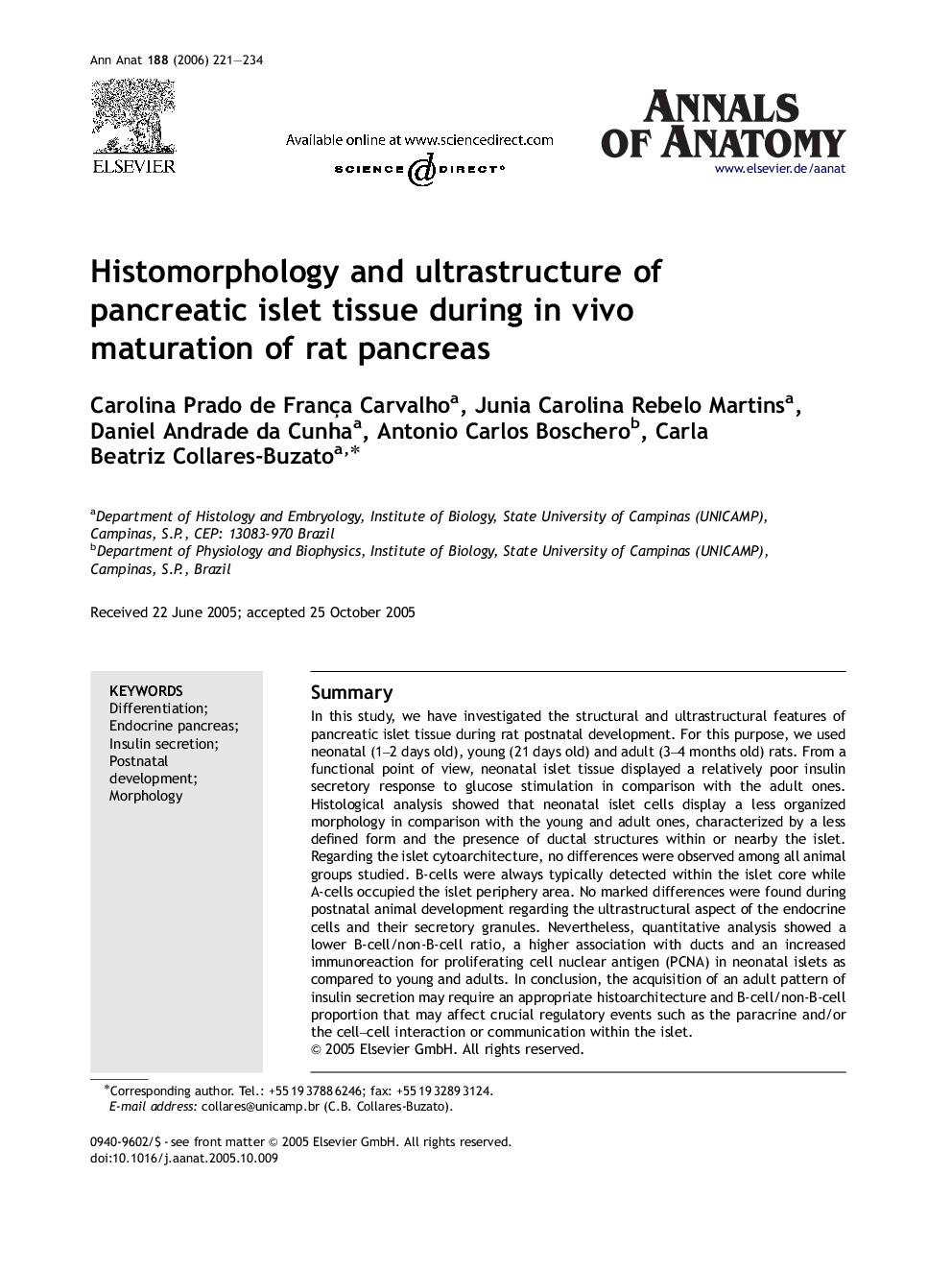| Article ID | Journal | Published Year | Pages | File Type |
|---|---|---|---|---|
| 8463162 | Annals of Anatomy - Anatomischer Anzeiger | 2006 | 14 Pages |
Abstract
In this study, we have investigated the structural and ultrastructural features of pancreatic islet tissue during rat postnatal development. For this purpose, we used neonatal (1-2 days old), young (21 days old) and adult (3-4 months old) rats. From a functional point of view, neonatal islet tissue displayed a relatively poor insulin secretory response to glucose stimulation in comparison with the adult ones. Histological analysis showed that neonatal islet cells display a less organized morphology in comparison with the young and adult ones, characterized by a less defined form and the presence of ductal structures within or nearby the islet. Regarding the islet cytoarchitecture, no differences were observed among all animal groups studied. B-cells were always typically detected within the islet core while A-cells occupied the islet periphery area. No marked differences were found during postnatal animal development regarding the ultrastructural aspect of the endocrine cells and their secretory granules. Nevertheless, quantitative analysis showed a lower B-cell/non-B-cell ratio, a higher association with ducts and an increased immunoreaction for proliferating cell nuclear antigen (PCNA) in neonatal islets as compared to young and adults. In conclusion, the acquisition of an adult pattern of insulin secretion may require an appropriate histoarchitecture and B-cell/non-B-cell proportion that may affect crucial regulatory events such as the paracrine and/or the cell-cell interaction or communication within the islet.
Related Topics
Life Sciences
Biochemistry, Genetics and Molecular Biology
Cell Biology
Authors
Carolina Prado de França Carvalho, Junia Carolina Rebelo Martins, Daniel Andrade da Cunha, Antonio Carlos Boschero, Carla Beatriz Collares-Buzato,
